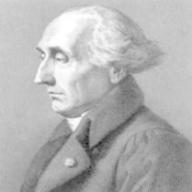✔ 最佳答案
I don't have the book, but I think I understand your queries.
Q: back emf = BANw(sinwt) ~ BANw,我吾明點解可以冇左個sinwt
Your book is wrong. BANw is the peak voltage. This is the max back emf that occurs when the plane of the coil lies in the direction of mangetic field. This positionof the coil occurs twice for a complete rotation of the coil. At these positions, sin(wt) = 1 (and at other positions, sin(wt) < 1).
Q: 之後佢又用呢條所謂既equation去證左舊野出黎:current = (V-BANw)/R
This is, in fact, a result of using Ohm's Law.
The net (peak) voltage on the coil = applied voltage - back (peak) emf
hence, net (peak) voltage on coil = V - BANw
By Ohm's Law, (peak) current I = Net (peak) voltage/resistance = (V-BANw)/R, where R is the resistance of the coil.
Q: 佢話當coil既angular velocity等於V/BAN既時候, current會等於零.
When coil starts to rotate from rest, its angular speed increases. In so doing, the back (peak) emf increases (the term BANw increases as w increases). But the applied volatge V is constant, hence, the net (peak) voltage decreases as w increases. The current through the coil then decreases. When the condition V = BANw is reached, the net (peak) voltage becomes zero, and the current is reduced to zero.
Q:我更加更加五明, 如果佢冇current又點保持住個angular velocity?
In an ideal motor, the coil encounters no friction. When the angular speed of the coil w equals to V/BAN, the current reduces to zero (for reason, see answer above). There will not be any net force acting on the coil. But at this moment of time, the coil is rotating with an angular speed. By Newton's First Law, any body, including a body in rotation, will continue its state of rest or uniform motion (uniform rotation in this case). Hence, it is because of inertia that the coil continue rotating under a no net current and no net force condition.

